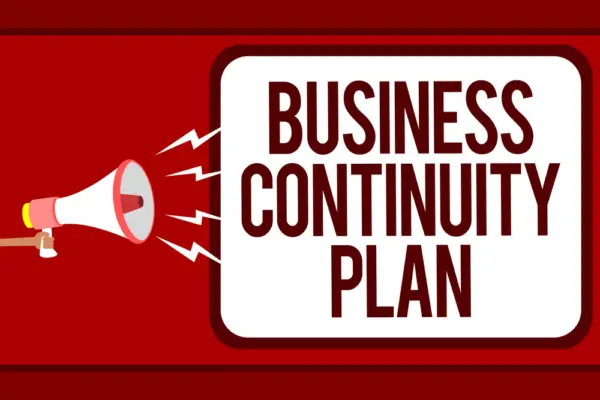Business continuity planning is essential to any organization’s risk management strategy.
It involves identifying potential risks and creating a plan to ensure critical business functions can continue during unexpected disruptions.
However, one question that often arises is, “How much does a business continuity plan cost?”
The answer to this question is not straightforward, as the cost of a business continuity plan (BCP) can vary significantly depending on several factors.
These factors include the size and complexity of the organization, the plan’s scope, the level of risk, and the resources required to implement and maintain the plan.
Despite the potential costs, having a well-designed and implemented BCP can save a company money and minimize the impact of an unexpected disruption.

In this article, we will explore the various components of business continuity plan costs, factors that influence the cost of a BCP, and how to calculate direct and indirect costs.
We will also discuss potential savings and return on investment, budgeting for a business continuity plan, insurance considerations, and evaluating and updating your BCP.
Key Takeaways
- The cost of a business continuity plan can vary significantly depending on several factors, including the size and complexity of the organization, the scope of the plan, and the level of risk.
- Despite potential costs, having a well-designed and implemented BCP can save a company money and minimize the impact of an unexpected disruption.
- Components of business continuity plan costs include planning, implementation, training, testing, and maintenance.
Understanding Business Continuity Planning
Defining Business Continuity and Its Importance
Business continuity is the process of ensuring that essential business functions can continue to operate in the event of a disruption.
Disruptions can be caused by a variety of factors, including natural disasters, cyber-attacks, equipment failures, and human error. The goal of business continuity planning is to minimize the impact of these disruptions on the organization and its customers.
A business continuity plan (BCP) is a comprehensive document that outlines the steps an organization will take to ensure that critical business functions can continue in the event of a disruption. The plan typically includes procedures for disaster recovery, emergency response, and business resumption.
The importance of business continuity planning cannot be overstated. Disruptions can be costly, both in terms of lost revenue and damage to reputation.
By having a BCP in place, organizations can minimize the impact of disruptions and ensure that they are able to continue providing essential services to their customers.
The Role of a Business Continuity Plan
A business continuity plan plays a critical role in ensuring that an organization can continue to operate in the event of a disruption. The plan should be designed to address a wide range of scenarios, from minor disruptions to major disasters.
The plan should include detailed procedures for disaster recovery, emergency response, and business resumption. These procedures should be regularly tested and updated to ensure that they remain effective.
In addition to outlining procedures for responding to disruptions, a BCP should also include a communication plan. This plan should outline how the organization will communicate with employees, customers, and other stakeholders in the event of a disruption.
Overall, a business continuity plan is an essential tool for ensuring that an organization can continue to operate in the face of disruptions.
By investing in a BCP, organizations can minimize the impact of disruptions and ensure that they are able to provide essential services to their customers.
Components of Business Continuity Plan Costs
Implementing a business continuity plan can be a significant investment, but the potential cost of not having one can be much higher. The cost of a business continuity plan can vary depending on the size of the organization, the complexity of the plan, and the level of training required.
Initial Assessment and Business Impact Analysis
The first step in developing a business continuity plan is to conduct an initial assessment and business impact analysis.
This involves identifying critical business processes, determining the potential impact of disruptions, and assessing the resources required to maintain operations during a disruption.
The cost of this phase can vary depending on the size and complexity of the organization, but it is an essential step in developing a comprehensive business continuity plan.
Development and Documentation of the Plan
Once the initial assessment and business impact analysis are complete, the next step is to develop and document the business continuity plan.
This involves identifying the strategies and procedures that will be used to maintain operations during a disruption, as well as the resources required to implement those strategies.
The cost of this phase can vary depending on the size and complexity of the organization, the level of detail required in the plan, and the resources required to develop and document the plan.
Employee Training and Awareness Programs
Finally, it is essential to provide training and awareness programs to ensure that employees are prepared to implement the business continuity plan in the event of a disruption.
This involves providing training on the strategies and procedures outlined in the plan, as well as raising awareness of the importance of business continuity planning. The cost of this phase can vary depending on the size of the organization, the level of training required, and the resources required to provide that training.
In conclusion, developing a business continuity plan involves several components, including an initial assessment and business impact analysis, the development and documentation of the plan, and employee training and awareness programs.

The cost of each component can vary depending on the size and complexity of the organization, but the investment is necessary to ensure that the organization is prepared to maintain operations in the event of a disruption.
Factors Influencing the Cost of a BCP
The cost of developing a Business Continuity Plan (BCP) can vary significantly depending on various factors. Here are some of the factors that influence the cost of a BCP:
Size and Complexity of the Organization
The size and complexity of an organization have a significant impact on the cost of developing a BCP. A larger organization with multiple locations, departments, and business units will require more resources to develop a comprehensive BCP. The complexity of the organization’s operations and processes will also affect the cost of developing a BCP.
Technology and Software Investments
Technology and software investments are critical components of a BCP. The cost of developing a BCP will depend on the organization’s existing technology infrastructure and software investments.
An organization that has invested in robust IT infrastructure and software to support its critical business functions will require fewer resources to develop a BCP.
On the other hand, an organization that has outdated technology infrastructure and software will require significant investments to develop a BCP.
Critical Business Functions and Processes
The critical business functions and processes of an organization are the most important factors that influence the cost of developing a BCP.
The cost of developing a BCP will depend on the complexity and criticality of the organization’s business functions and processes. An organization with critical business functions that require a high level of uptime and availability will require more resources to develop a BCP.
In summary, the size and complexity of an organization, technology, and software investments, and critical business functions and processes are the main factors that influence the cost of developing a BCP.
Organizations should carefully consider these factors when developing a BCP to ensure that they allocate the necessary resources to develop a comprehensive and effective BCP.
Calculating Direct and Indirect Costs
When estimating the cost of a business continuity plan, it is essential to consider both direct and indirect costs. Direct costs are expenses that are directly associated with implementing and maintaining a business continuity plan, while indirect costs are expenses that are not directly associated with the plan but are incurred as a result of its implementation.
Estimating Downtime and Recovery Costs
One of the most critical factors to consider when calculating the cost of a business continuity plan is the cost of downtime.
Downtime refers to the period during which critical business functions are unavailable due to a disaster or other disruptive event.
The cost of downtime can be calculated by multiplying the number of hours of downtime by the hourly cost of lost business revenue, including direct and indirect costs.
To estimate the recovery costs, it is essential to consider the resources required to restore critical business functions.
Recovery costs include the cost of restoring hardware and software systems, the cost of hiring additional staff to assist with recovery efforts, and the cost of any additional equipment required to restore critical business functions.
Assessing Revenue and Financial Loss Risks
Assessing the risks of revenue and financial loss is another critical factor to consider when calculating the cost of a business continuity plan.
Revenue loss risks refer to the potential loss of income due to a disaster or other disruptive event. To assess the risks of revenue loss, it is essential to consider the potential impact of downtime on sales, customer satisfaction, and brand reputation.
Financial loss risks refer to the potential financial impact of a disaster or other disruptive event. To assess the risks of financial loss, it is essential to consider the potential impact of downtime on the cost of goods sold, employee productivity, and other indirect costs.
By considering both direct and indirect costs, as well as the risks of revenue and financial loss, organizations can gain a better understanding of the true cost of a business continuity plan.
This understanding can help organizations make informed decisions about the level of investment required to ensure the continuity of critical business functions in the event of a disaster or other disruptive event.
Potential Savings and Return on Investment
Business Continuity Planning (BCP) is an investment in the future of a business. While the cost of implementing a BCP can vary depending on the size and complexity of the organization, it is important to consider the potential savings and return on investment that a BCP can provide.
Reducing the Impact of Disruptions
One of the biggest benefits of having a BCP in place is the ability to reduce the impact of disruptions. Disruptions can come in many forms, including natural disasters, cyber-attacks, and power outages.
By having a plan in place, a business can minimize the impact of these disruptions and ensure that operations can continue as smoothly as possible.
Preventing Revenue and Reputation Losses
Another important benefit of having a BCP is the ability to prevent revenue and reputation losses. Disruptions can result in lost revenue due to downtime, lost productivity, and missed opportunities.
Additionally, disruptions can damage a business’s reputation, which can have long-term effects on customer loyalty and trust.
By having a BCP in place, a business can minimize the impact of disruptions on revenue and reputation. This can be achieved through the implementation of recovery strategies that are designed to minimize downtime and ensure that operations can continue as smoothly as possible.
Overall, while the cost of implementing a BCP may seem high, the potential savings and return on investment make it a worthwhile investment for any business.
By reducing the impact of disruptions and preventing revenue and reputation losses, a BCP can help ensure the long-term success of a business.
Budgeting for a Business Continuity Plan
Budgeting for a business continuity plan (BCP) is an essential part of the planning process. The cost of a BCP can vary depending on the size and complexity of the organization, the scope of the plan, and the resources available.
However, it is important to note that the cost of not having a BCP in place can be much higher than the cost of implementing one.
Allocating Funds for Different BCP Phases
The cost of a BCP can be broken down into different phases, each with its own set of expenses. The following table shows a breakdown of the different phases and the associated costs:
| BCP Phase | Description | Cost |
|---|---|---|
| Business Impact Analysis (BIA) | Identifying critical business processes and their dependencies | $5,000 – $25,000 |
| Risk Assessment | Identifying potential threats and vulnerabilities | $5,000 – $15,000 |
| Plan Development | Developing the BCP document and procedures | $10,000 – $50,000 |
| Training and Testing | Training personnel and testing the plan | $5,000 – $25,000 |
| Maintenance | Reviewing and updating the plan on an ongoing basis | $5,000 – $10,000 |
It is important to allocate funds for each phase of the BCP to ensure that the plan is comprehensive and effective.
Considerations for Ongoing BCP Expenses
In addition to the initial cost of developing a BCP, there are ongoing expenses to consider. These expenses include:
- Personnel costs: Personnel must be trained on the BCP and must participate in testing and maintenance activities.
- Technology costs: Technology is often a critical component of a BCP, and ongoing expenses may include software licenses, hardware upgrades, and cloud services.
- Insurance costs: Some organizations may choose to purchase business interruption insurance to cover the costs of downtime.
It is important to consider these ongoing expenses when budgeting for a BCP. Ongoing expenses can vary depending on the size and complexity of the organization and the scope of the plan.
In conclusion, budgeting for a BCP is a critical part of the planning process. By allocating funds for each phase of the BCP and considering ongoing expenses, organizations can ensure that their BCP is comprehensive and effective.

Insurance and Business Continuity Planning
Business continuity planning (BCP) is a critical process for any organization that wants to ensure its operations can continue in the face of a disaster or other disruptive event.
However, implementing a BCP can be costly, especially for small businesses. One way to mitigate these costs is to integrate insurance with business continuity strategies.
Role of Insurance in Mitigating BCP Costs
Insurance can play a key role in mitigating the financial losses associated with a disaster. For example, property insurance can cover the cost of repairing or replacing damaged equipment, while business interruption insurance can provide funds to cover lost revenue during the recovery period.
By transferring some of the financial risk to an insurance company, organizations can reduce the financial burden of implementing a BCP.
However, it’s important to note that insurance is not a substitute for a comprehensive BCP. Insurance policies typically have limits and exclusions that may not cover all of the costs associated with a disaster.
In addition, insurance does not address the operational and logistical challenges of a disaster, such as restoring IT systems or relocating employees.
Integrating Insurance with Business Continuity Strategies
To get the most out of insurance, it’s important to integrate it with your organization’s business continuity strategies. This involves identifying the risks that are most likely to disrupt your operations and then developing a BCP that addresses those risks.
Insurance can then be used to transfer the financial risk associated with those risks to an insurance company.
When integrating insurance with business continuity strategies, it’s important to work with an insurance broker or agent who has experience in this area.
They can help you identify the right insurance policies to cover your organization’s specific risks and can also help you negotiate favorable terms and conditions.
In conclusion, while insurance can play a key role in mitigating the financial losses associated with a disaster, it’s important to remember that it is not a substitute for a comprehensive BCP.
By integrating insurance with business continuity strategies, organizations can reduce the financial burden of implementing a BCP while still ensuring they are prepared to respond to a disaster.
Evaluating and Updating Your Business Continuity Plan
Once a business continuity plan is in place, it is important to evaluate and update it regularly to ensure its effectiveness.
We will discuss two key aspects of evaluating and updating a business continuity plan: conducting regular reviews and testing and adjusting the plan for emerging threats and changes.
Conducting Regular Reviews and Testing
Regular reviews and testing of the business continuity plan are crucial to ensure that it remains up-to-date and effective. This involves reviewing the plan on a regular basis to ensure that it still meets the needs of the organization and its stakeholders.
One way to conduct reviews is to use a checklist that covers all the key elements of the plan, such as the business impact analysis, recovery strategies, and communication plans. This can help to identify any areas that need updating or improvement.
Testing the plan is also important to ensure that it will work in an emergency situation. This can involve running simulations of different scenarios to test the plan’s effectiveness.
It is important to involve all relevant stakeholders in these tests to ensure that everyone is familiar with the plan and knows what to do in an emergency.
Adjusting the Plan for Emerging Threats and Changes
Emerging threats and changes in the business environment can render a business continuity plan ineffective if it is not updated accordingly.
It is important to stay up-to-date with the latest threats and changes in the business environment to ensure that the plan remains effective.
Regularly reviewing the plan can help to identify any emerging threats or changes that need to be addressed. This may involve updating the plan to include new threats or changing recovery strategies to address new risks.
In conclusion, regularly evaluating and updating a business continuity plan is essential to ensure its effectiveness in an emergency situation.
This involves conducting regular reviews testing and adjusting the plan for emerging threats and changes. By following these steps, organizations can ensure that their business continuity management remains effective and up-to-date.

Chris Ekai is a Risk Management expert with over 10 years of experience in the field. He has a Master’s(MSc) degree in Risk Management from University of Portsmouth and is a CPA and Finance professional. He currently works as a Content Manager at Risk Publishing, writing about Enterprise Risk Management, Business Continuity Management and Project Management.

